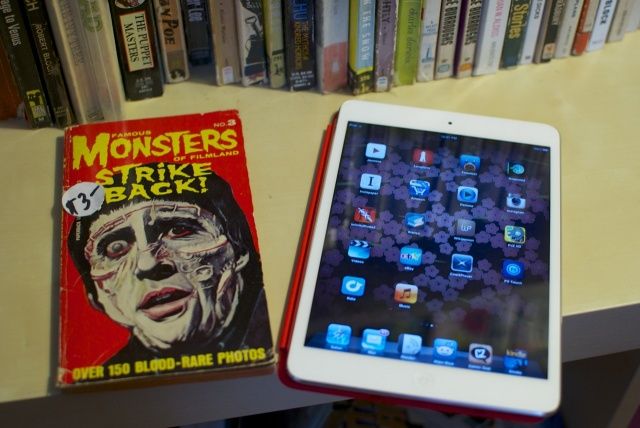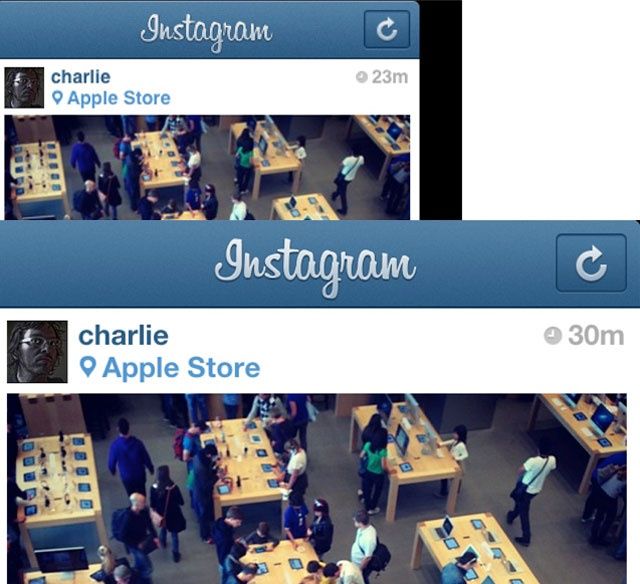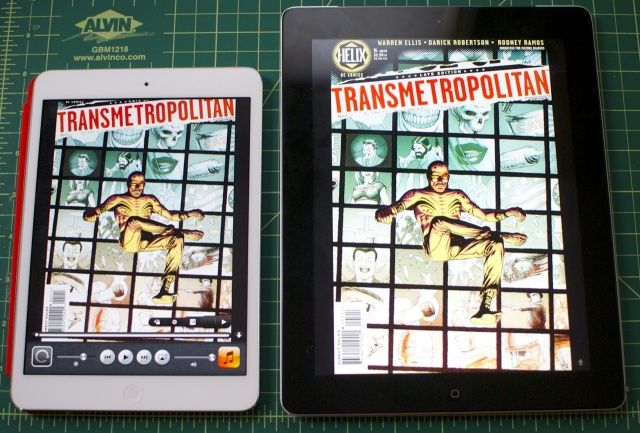Here are the two things you need to know about the iPad mini. The form factor’s perfect, it’s beautifully designed, you will love holding it… but the screen’s awful and the performance is lacking, especially in graphics. Even at the price, it’s a deeply disappointing product that most people should think twice about buying right now.

Let’s get this out of the way: inside the cool new design, the iPad mini is basically just a shrunken down iPad 2. Sure, it’s got some bells and whistles strapped on — new stereo speakers, Siri support, the iPad 3/4’s better camera and LTE support — but where it counts, this is an iPad 2 with four iPhone 3GS screens duct-taped to it.
What does that mean? Compared to the iDevices Apple has released in the last year — the iPhone 5, an iPad 3 or an iPad 4 — the iPad mini feels as if it’s sluggishly wading through molasses with many graphically intensive tasks. There’s notable lag pretty much everywhere, especially when it comes to loading graphically intensive apps.
Update: Originally, this review said performance across the board was worse, but this seems to have been a hiccup with my review unit: a reboot vastly improved performance across the board. We’ve updated this review to soften our take on the iPad mini’s horsepower: while it is still lacking when it comes to graphics, it’s about as fast as an iPad 3 when it comes to launching apps and the like, although still a little slower due to the fact it only has 512MB of RAM to the iPad 3’s 1GB.
No one expects a $329 product to match the performance of an iPhone or iPad that costs at least a couple hundred bucks more, but the differential could be less profound, especially when it comes to graphically intensive apps.The issue, of course, is that the iPad mini uses Apple’s old A5 chip, which is just ancient at this point in the graphics arena. An A6 chip in the iPad mini — even underclocked — and a full gigabyte of RAM would have made all the difference in the world.

But the performance isn’t nearly as disappointing as the screen. Boy, it’s just awful: so awful you can’t believe Apple would actually sell a new product with this display in late 2012.
You can’t believe Apple would actually sell a product with this display in late 2012.
Everyone knows at this point that the iPad mini doesn’t have a Retina display, and that’s definitely a problem: from the second you boot up the iPad mini, you’ll know the difference. Text is the biggest issue: letters appear murky, fuzzy and unclear. Your eyes have to work harder to resolve them. The result is an optical fatigue that I had completely forgotten about in the past two years. I’ve been spoiled by Apple’s Retina-ized products. The pixel density is a step up from the iPad 2, but just barely, and it’s notably worse than the quality of not just the last three iPhones and two iPads, but the likes of the Kindle Fire HD 7 and Galaxy 7.
The problems with the display don’t end just at resolution, though. Onscreen objects seem to be farther away behind the glass than on the iPad 3 or the iPhone 5. There’s a visible air gap between the glass and the LCD underneath. If you’ve spent time with an iPhone 5, in which onscreen objects appear as if they have been physically painted on top of the glass, using the iPad mini is like seeing everything far away through a thick, slightly dirty window.

I can’t tell you how much I dislike this display. It’s inexcusably bad. I’m a person who stares at computer screens all day long, and after using my iPad mini for an hour, I found that my eyes were actually hurting. I actually wanted to get away from the iPad mini’s display. That’s a big problem: Apple makes immersive products that suck you in. The iPad mini’s display actually pushes you away.
The thing that makes it all so much worse is that the form factor of this thing is perfect. It’s Apple’s Kindle: a light, thin device that feels just wonderful in the hand. I want to love the iPad mini so much. I love holding it. It’s got a form factor that seems tailor made for reading… and yet reading, above anything else, is the experience that is most painful on the iPad mini.
It’s Apple’s Kindle: a light, thin device that feels just wonderful in the hand. I love holding it.
It’s mostly only text that looks truly awful on the iPad mini display. Games and the like, while not Retina, tend to look a lot better, as does video (although again, it’s important to note you’re not getting even 720HP video on an iPad mini). If you’re buying an iPad mini as a gamer, or to watch videos, or to take and edit photos, or even to read comics, you’re going to find the display a lot less of an issue than if you are mostly interested in the iPad mini to read iBooks or Kindle e-books, check out Instapaper and Twitter, read web pages on Safari, check your e-mail and so on.

It’s maddening. Why did Apple release the iPad mini with a screen this terrible, especially when it’s competing with devices like the Kindle Paperwhite, the Kindle Fire 7 and the Galaxy 7 that aren’t just much cheaper but have displays that are so much superior for reading text?
What makes all the difference is the way the iPad mini feels in the hand. The iPad mini takes all of its design cues from the iPhone 5 and the fifth-generation iPod touch, and it shows. Design-wise, this is very much an Apple product of late 2012. In fact, holding an iPad mini is such a pleasant experience that it only exacerbates our frustrations with the hardware inside the beautiful, Ive-designed chassis. Picking up an iPad mini is just bliss, but actually using it is another thing entirely.
It didn’t have to be this way. In 2013? This is going to be Apple’s best product next to the iPhone. It’ll have a Retina display. It’ll have an A6 processor. It’ll have a gig of RAM. It’ll be light, cheap and have great battery life. It’ll be a joy to use. But that’s the iPad mini Apple should be shipping today.
In 2013? The iPad mini is going to be Apple’s best product next to the iPhone.
So why isn’t it? If I were forced to speculate, I think it’s probably because 7.85-inch 2048 x 1536 Retina displays aren’t yet affordable enough for Apple to make the kind of margins it needs on the iPad mini. Apple can’t use another resolution for the iPad mini display, because the fact that all existing iPad apps automatically work on the iPad mini is a huge advantage for both consumers and developers alike. So if they wanted to release the iPad mini this year, they needed to use an inferior 1048 x 768 display.
And that’s the thing: Apple had to release the iPad mini this year. The competition in the 7-inch market — Samsung, Google, Amazon — is gaining momentum. By 2013, it’s likely that one of these companies would be entrenched on the mini-tablet market. If Apple waited any longer, they may have lost the 7-inch tablet market entirely, and so Cupertino felt forced to make a big compromise to enter the market on-time.

I would recommend that most people wait until the second-generation model to buy an iPad mini.
[xrr rating=60%]
![The iPad Mini: You Should Probably Wait Until The Second Generation [Review] ipadmini](https://www.cultofmac.com/wp-content/uploads/2012/11/ipadmini.jpg)

